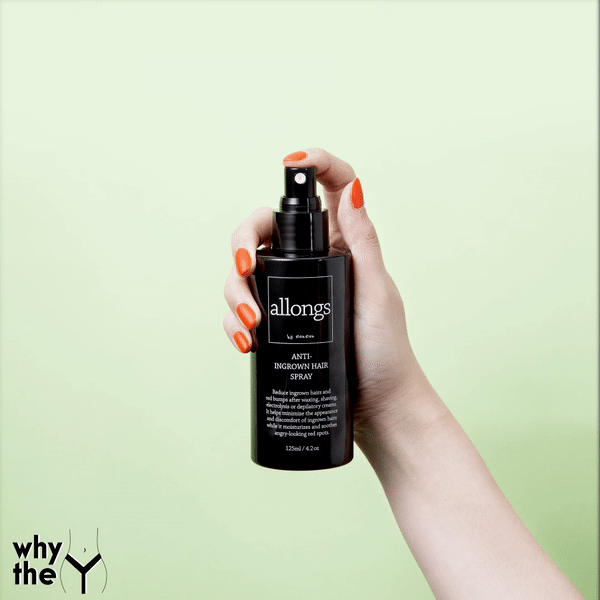Welcome back to #Whythey! Today we are covering quite a *hairy* topic: ingrowns.
Ingrown Hairs Are hairs that grow back in toward the epidermis. On a microscopic level, the very tip of your hair is quite sharp, and it’s even sharper when cut or shaved (2). This makes it easy for the hair to pierce your epidermis and grow back into your skin. Sometimes this process creates papules (otherwise known as razor bumps) on the surface of the skin where the ingrown is preventing pus from exiting through your pores (1).

It’s a pretty cruddy situation as ingrowns can be painful, but they are also extremely common amongst regular shavers, waxers, or trimmers. However inevitable ingrown hairs may seem, don’t worry! There are a couple of easy ways to reduce their frequency over time. Moisturization and Exfoliation are two paramount factors when it comes to ingrown prevention (1).
- Hydration: Keeping your skin hydrated after shaving or waxing is a great way to protect your skin barrier and block hairs from re-penetrating skin.
- Exfoliation: Dead skin can trap ingrowns, try gently exfoliating before hair removal to reduce the likelihood of ingrowns forming (1).
Our anti-ingrown hair spray contains allantoin plus panthenol to keep your skin extra plump and hydrated, as well as encourage cell-turnover to keep those ingrowns at bay (3)!

If you do notice an ingrown, you can use anti-ingrown spray to calm inflammation and redness. Our spray is infused with Arnica Flower Extract, a known super-soother.
That’s all for this installment of #WhytheY! Be sure to stay tuned to learn more about intimate care! 🥰
________________________________________________________________________________________________________________________________




